Home & Living
Pocket Gardens
Here are three unique perspectives on urban gardening.
Admit it, that lonely geranium on the deck is looking pretty sad. And let’s not even talk about the eyesore that is the sun-baked concrete parking pad. If the little bit of outdoors behind your land-starved city home is that aesthetically depressing, why not consider a redo? After all, nothing is more soothing after a long day than relaxing in a lush, carefully planned garden. And, yes, even small spaces can yield big results. The proof? We found three city gardens that show all you need is a few stalwart plants, a hose, and a little imagination to transform a bland backyard into Babylon.
City Stylish
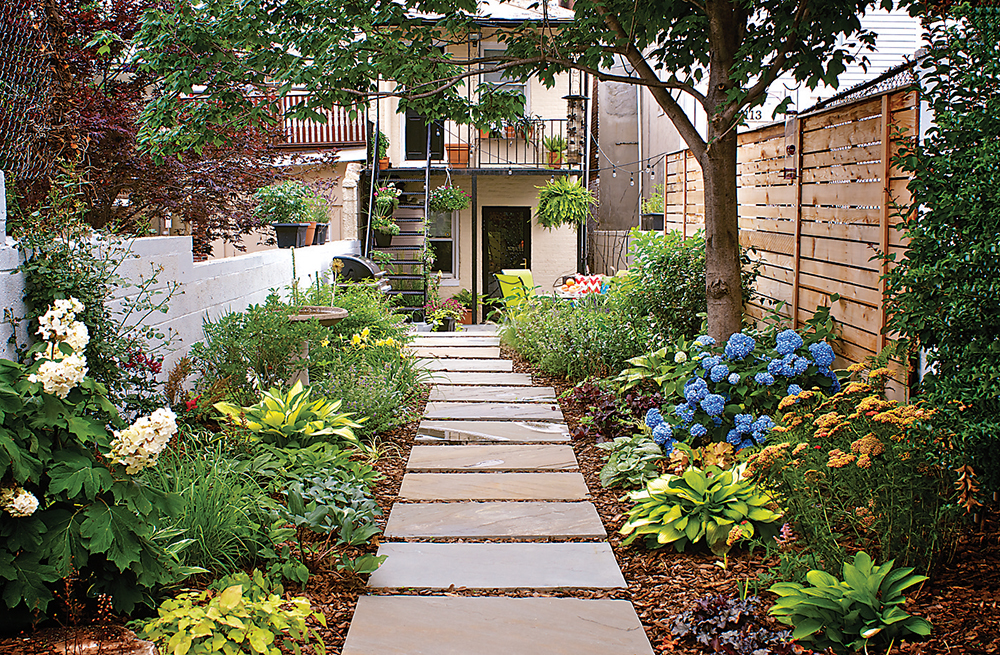
When Ted and Emilie Carter moved into their Butchers Hill rowhouse in 2013, they took one look at the 600-square-foot backyard—little more than a deck, a patch of grass, and some ominous, overgrown cypress—and knew something had to be done.
But there was no cause to call in the experts, since they are the experts—Ted is the president of Pinehurst Landscape Co. and Emilie is a landscape designer at Design Collective.
“The environment doesn’t stop at the county line,” says Emilie. “If your backyard is nothing but concrete and furniture, think how much better it would be if you had a tree. We’re trying to make the environment a little bit better for our little part of the world.”
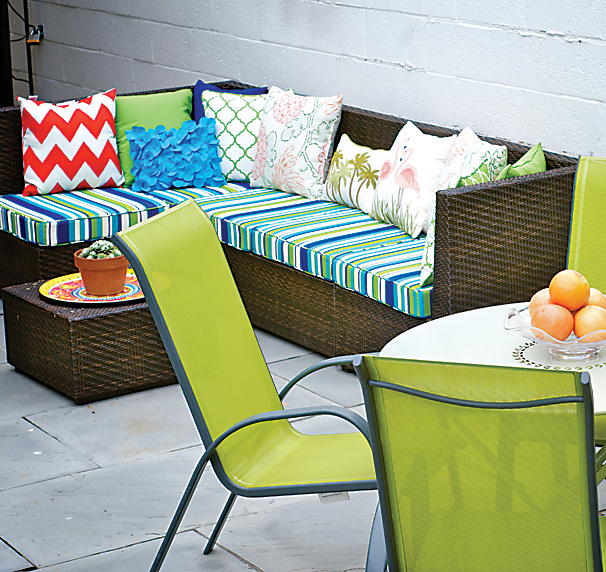 To create an entertaining space, the couple demolished the deck in favor of a stone patio and covered unsightly concrete block walls with wood fencing set horizontally for a more modern feel. An 18-inch wall offsets the patio from the larger garden, where a stone path meanders, giving a sense of motion and space that is surprising in the tight urban setting.
To create an entertaining space, the couple demolished the deck in favor of a stone patio and covered unsightly concrete block walls with wood fencing set horizontally for a more modern feel. An 18-inch wall offsets the patio from the larger garden, where a stone path meanders, giving a sense of motion and space that is surprising in the tight urban setting.
Mostly, Ted and Emilie agreed on the structural decisions. But when it came to plants, the conversation got tricky.
“We both have our favorites,” says Ted. “And I’m used to working with clients in the county where you have more flexibility. In the city, every square foot counts.”
Because of the urban heat-island effect, they avoided delicate flowers. Working with the long, narrow space and an existing maple tree, they planted for year-round interest. The flora explosion begins in March in shades of green, white, and purple, with daffodils, peonies, salvia, and alliums, and becomes more robust in summer as the hostas fill the shady areas. Then the hydrangea, coneflower, yarrow, and red-and-yellow daylilies come into bloom. In the fall, the camellia blooms and, in winter, the beautyberry brings color to a stark landscape.
To make the most of the space, the couple trained a crepe myrtle up a concrete wall and did the same with clematis and climbing roses. They also added a holly to create a habitat for birds.
Like all good gardeners, the Carters are never truly finished. They plan to add a container vegetable garden and are even kicking around the idea of a green wall.
“People don’t realize how rewarding it can be to grow something,” says Emilie, “whether it’s flowers you put in a vase or two good tomatoes.”
Hanging Gardens
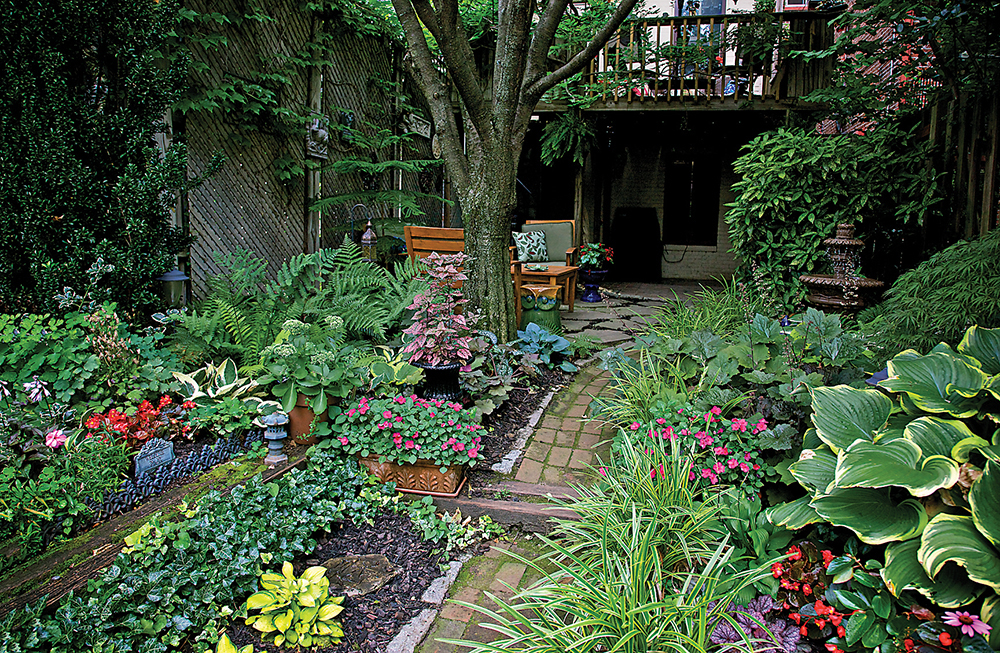
Christian Roth says he’s not a particularly whimsical person, but there is something decidedly fanciful about the garden he shares in Bolton Hill with his partner, Brian Causey, and their two British shorthair cats. The walls are hung with inventive bits of artwork, much of it collected on the couple’s annual spring pilgrimage to New Orleans. Little glass mushrooms peek out from shrubs and two water fountains burble pleasantly. And then there are the terraces.
Each of the home’s three terraces is bedecked with pots, hanging baskets, and window boxes overflowing with marigolds, petunias, geraniums, begonias, hibiscus, and herbs. But most striking is the wisteria, which has been trained up the three-story spiraling iron staircase, its branches thick as an arm, twisting around each curve.
“The back porch is a little Swiss Family Robinson,” Roth concedes.
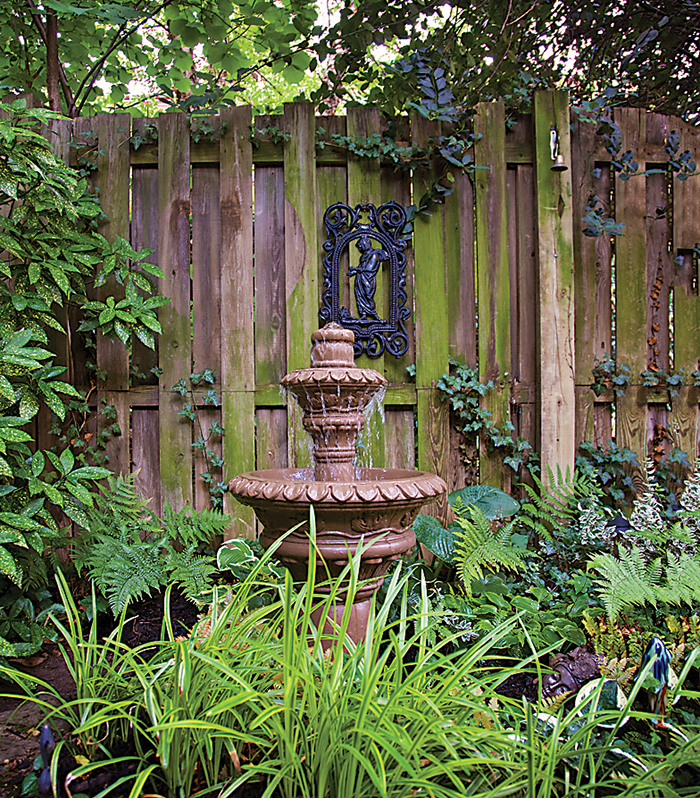 When the onetime suburbanites made the move to the city rowhome in 2000, they decided to remove a cracked car pad and create a flagstone patio and flower beds. “In removing the car pad, it felt good, putting earth back where there was concrete,” says Roth, who is co-president of the Bolton Hill Garden Club.
When the onetime suburbanites made the move to the city rowhome in 2000, they decided to remove a cracked car pad and create a flagstone patio and flower beds. “In removing the car pad, it felt good, putting earth back where there was concrete,” says Roth, who is co-president of the Bolton Hill Garden Club.
After laying the new patio, the couple used the brick from the old car pad to create a path leading back to the alley, flanked on both sides by lush greenery. Three iron urns create a focal point in the very back of the garden while a Japanese maple gives the rectilinear space some height. Over the years, the garden has become dominated by perennials—ferns, hostas, lamb’s ears—with annuals thrown in for color, like the variegated coleus in the iron urns. “We wanted to evoke a woodland,” Roth says.
While there is an elaborate system of hoses and timers to irrigate the garden (Roth swears by Terra-Sorb crystals and gel mats for helping containers retain water in summer), the garden has become less maintenance and more oasis as it has matured. With the exception of the occasional police helicopter overhead, it’s easy to feel transported from the city.
“Don’t let yourself be limited by concrete,” Roth advises. “You can do a lot with containers or build a rectangle and fill it with dirt and go for it.”
And it hasn’t been just about the back of the property: Never ones to pass up a gardening opportunity, the couple recently ripped out the concrete pad at the front of the house and put in a new flower bed, along with another huge urn overflowing with flora.
Constant Gardener
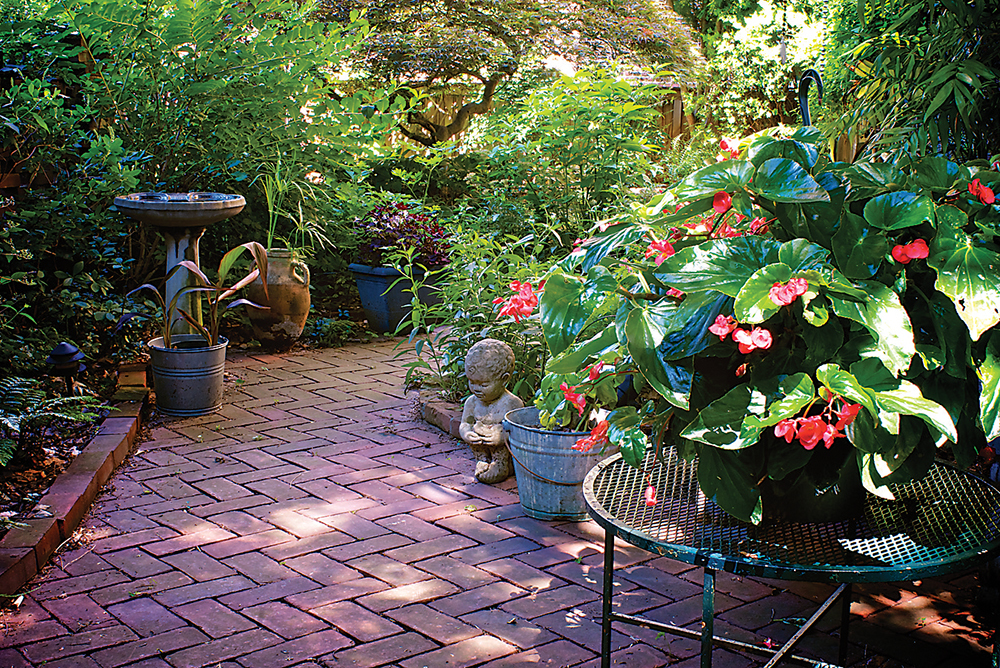
Roberta Hahn was tired of mowing grass, which is why she traded a large country home for a tiny plot in Bolton Hill. Now she gets her large-garden fix as a volunteer at Cylburn Arboretum and at her second home in New Orleans, where she spends the winter. But she was not going to live entirely without a garden in Baltimore.
When she purchased her home in 2002, the existing space was two straight flower beds running with military precision down either side of the yard, ending at a 40-year-old Japanese maple sitting on a brick terrace. It was also mostly shaded by neighbors’ trees, until, one by one, they started to come down. She planted a zelkova, a fast-growing, urban-friendly tree, to restore some shade, and ripped up the boring beds in favor of ones with organic shapes, reworking the original brick path into one that hugs the new beds.
“Having a meandering path is always more interesting, even in a tiny space,” she explains.
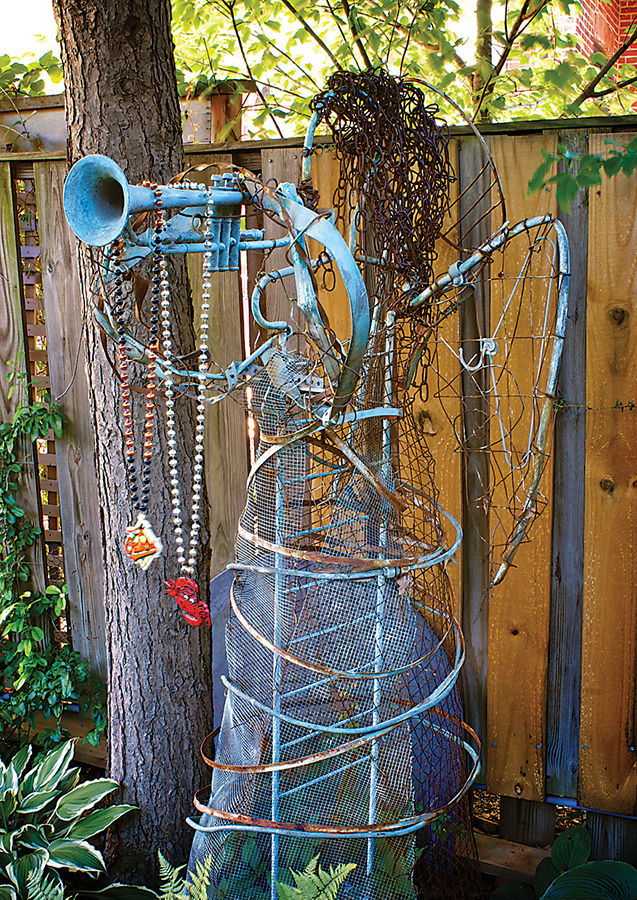 Describing the garden as a “plant zoo,” the avid horticulturalist introduced almost exclusively low-maintenance perennials and natives to the space: Joe-Pye weed, black-eyed Susan, coneflower, golden ragwort, bleeding heart, and azalea.
Describing the garden as a “plant zoo,” the avid horticulturalist introduced almost exclusively low-maintenance perennials and natives to the space: Joe-Pye weed, black-eyed Susan, coneflower, golden ragwort, bleeding heart, and azalea.
“I have one of everything,” she says.
Now she puts in the plants she likes, moving those that need to be moved, and giving away the flops to friends in the Bolton Hill Garden Club. She gets unique ferns and hostas from a friend who propagates them for fun. She planted deutzia simply because she loves it. Her spring-blooming hellebores are so happy, she splits off the babies and gifts them to fellow gardeners.
There’s always something going on in her “zoo”: Each spring, an espalier forsythia blooms beautifully; come autumn, the clematis along the back wall does the same. The constants in the garden are the birdbath (a rat-proof alternative to a feeder) and the angel sculpture created by a found-object artist in South Carolina.
“Gardeners are always trying new things, new plants, or plant combinations,” she says.
Perhaps her most ingenious decision was to remodel the back of her home with accordion doors that fold open to a screen porch, blurring the line between inside and out.
“It can be quite quiet back here,” she says. “Now, with my porch, I can watch the O’s play from the garden—without being eaten alive by mosquitoes!”